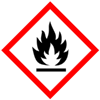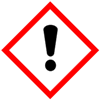 |
Isopropyl Acetate or 2-Propyl Ethanoate or 2-Acetoxypropane or Acetic Acid Isopropyl Ester SDS Safety Data Sheet of Supplier Exporter Manufacturers' Representative |
Email: info@ammol.org |
Call Toll Free +1-855-552-6665 |
Isopropyl Acetate or 2-Propyl Ethanoate or 2-Acetoxypropane or Acetic Acid Isopropyl Ester
CAS Number: 108-21-4
Molecular Formula: C5H10O2 or CH3COOCH(CH3)2
Molecular Weight: 102.13

Isopropyl Acetate or 2-Propyl Ethanoate or 2-Acetoxypropane or Acetic Acid Isopropyl Ester
Isopropyl acetate or 2-Acetoxypropane or Acetic acid isopropyl ester or 2-Propyl ethanoate SDS, SAFETY DATA SHEET
MSDS SHEET, MATERIAL SAFETY DATA SHEET 05-Dec-24
1. PRODUCT AND COMPANY IDENTIFICATION
Product Name & Other Names: Isopropyl acetate or 2-Acetoxypropane or Acetic acid isopropyl ester or 2-Propyl ethanoate.
CAS Number: 108-21-4
EINECS EC Number: 203-561-1
FEMA: Number 2926
Relevant uses and uses advised against (if any): Industrial Manufacturing.
Suppliers: As per letterhead.
2. HAZARDS IDENTIFICATION
GHS, Globally Harmonized System Classification in accordance with 29 CFR 1910
Classification according to Regulation (EC) No 1272/2008
Flammable liquids Category 2, H225
Serious eye damage/eye irritation Category 2B, H319
Specific target organ toxicity - single exposure (Category 3), Central nervous system, H336
Labeling according to GHS & Regulation (EC) No 1272/2008
GHS Label Elements  Combustible Liquid |
GHS Label Elements |
Signal Words (GHS-USA): Danger
Hazard statements (GHS-USA):
H225 Highly flammable liquid and vapor.
H319 Causes serious eye irritation.
H336 May cause drowsiness or dizziness.
Precautionary statements (GHS-USA):
P210: Keep away from heat/sparks/open flames/hot surfaces – No smoking.
P261: Avoid breathing vapors.
P264: Wash … thoroughly after handling.
P271: Use only outdoors or in a well-ventilated area.
P273: Avoid release to the environment.
P280: Wear protective gloves/protective clothing/eye protection/face protection.
P302+352: IF ON SKIN: Wash with soap and water.
P305+351+338: IF IN EYES: Rinse cautiously with water for several minutes. Remove contact lenses if present and easy to do – continue rinsing.
P337+313: If eye irritation persists get medical advice/attention.
P403+235: Store in a well-ventilated place. Keep cool.
P501: Dispose of contents/container to authorized agents only.
3. COMPOSITION / INFORMATION ON INGREDIENTS
Product Name & Other Names: Isopropyl acetate or 2-Acetoxypropane or Acetic acid isopropyl ester or 2-Propyl ethanoate.
CAS Number: 108-21-4
EINECS EC Number: 203-561-1
FEMA: Number 2926
4. FIRST-AID MEASURES
Always seek medical advice after the first aid treatment.
Eye Contact: Rinse immediately with plenty of water for 10 minutes at least. Contact a physician if symptoms persist.
Skin Contact: Wash thoroughly with soap and water; flush with plenty of water. Take off spoilt clothes. Contact physician if symptoms persist.
Ingestion: Wash the mouth with water; seek medical advice immediately.
Inhalation: Remove from exposure site to fresh air and keep at rest. Obtain medical advice.
5. FIRE-FIGHTING MEASURES
Extinguishing Media Recommended: CO2, foam, dry chemicals, Water spray.
Non-Recommended: Do not use direct water jet on burning material.
Extinguishing Procedures: Closed containers may build up pressure at elevated temperatures. If possible, containers should be cooled with a water spray. For large fires, apply water from as far as possible. Keep containers and surroundings cool with water spray. Beware of vapors accumulating to form explosive concentrations.
Special Information: In the event of a fire, wear full protective clothing and NIOSH-approved self-contained breathing apparatus with full face piece operated in the pressure demand or other positive pressure mode.
6. ACCIDENTAL RELEASE MEASURES
Personal precautions, protective equipment, and emergency procedures: Avoid breathing dust/fumes/gas/mist/vapors/spray. Use individual protective equipment (waterproof boots, suitable protective clothing, safety glasses, etc).
Environmental precautions: Do not let the product enter drains, soil, or water sources.
Methods and materials used for containment Cleanup procedures and Storage: Contain spilled material. Cover with an inert, non-combustible absorbent material, (e.g. sand, earth, diatomaceous earth, vermiculite). Vacuum or sweep up and remove to an approved disposal container. Avoid open flames or other sources of ignition.
7. HANDLING AND STORAGE
Precautions for safe handling: Apply according to good manufacturing and industrial hygiene practices. Ensure proper ventilation. Wash thoroughly after handling. Do not drink, eat, or smoke while handling. Avoid contact with skin, eyes, and clothing. Minimize dust generation. Avoid breathing dust/fumes/gas/mist/vapors/spray. Keep container tightly closed. Avoid ingestion and inhalation. Use individual protective equipment (waterproof boots, suitable protective clothing, safety glasses, etc).
Conditions for safe storage, including any incompatibilities: Store in cool, dry, and ventilated area away from heat sources and protected from sunlight in tightly closed original container. Keep air contact to a minimum. Do not leave the material container open. Store protected from heat, light, sparks and ignition sources and incompatible materials. Avoid inhalation of dust/mist/vapor. Do not store with incompatible materials like oxidizing agents, acid anhydrides, acids, and bases. Keep air contact to a minimum. Keep away from ignition sources and naked flame. - No smoking. Take measures to prevent the build-up of electrostatic charge.
8. EXPOSURE CONTROL
Exposure Limit Values:
ACGIH TWA: 100 ppm
ACGIH STEL:200 ppm.
Respiratory Protection: Avoid to breath directly on the product. Apply local ventilations when appropriate.
Ventilation System: A system of local and/or general exhaust is recommended to keep employee exposures as low as possible.
Personal Respirators (NIOSH Approved): For conditions of use where exposure to dust or mist is apparent and engineering controls are not feasible, a particulate respirator may be worn.
Skin Protection: Wear protective gloves and clean body-covering clothing.
Eye Protection: Use chemical safety goggles and/or full face shield where dusting or splashing of solutions is possible. Maintain eye wash fountain and quick-drench facilities in work area.
Other Control Measures: Maintain good housekeeping in work area. Handle in accordance with good industrial hygiene and safety practice.
9. PHYSICAL AND CHEMICAL PROPERTIES
Appearance: Clear, colorless liquid with a characteristic fruity odor.
Odor: Characteristic fruity odor.
Odor threshold: No information found.
pH: No information found.
Relative density: around 0.87
Melting point/freezing point: -73C.
Initial boiling point and boiling range: 89C.
Flash point: 2C Closed cup.
Auto-ignition temperature: 479C.
Decomposition temperature: No information found.
Upper/lower flammability or explosive limits: No information found.
Vapor pressure: No information found.
Vapor density: No information found.
Evaporation rate: No information found.
Flammability (solid, gas): No information found.
Partition coefficient: n-octanol/water: No information found.
Solubility(ies): Moderately soluble in water.
Viscosity: No information found.
10. STABILITY AND REACTIVITY
Reactivity: It presents no significant reactivity hazards, by itself or in contact with water. Avoid contact with strong acids, alkali, or oxidizing agents.
Decomposition: Carbon monoxide and unidentified organic compounds may be formed during combustion.
Conditions to Avoid: Heat, sparks, open flames, and other ignition sources. Avoid temperatures exceeding the flash point. Contact with incompatible materials like oxidizing agents, acid anhydrides, acids, and bases.
11. TOXICOLOGICAL INFORMATION
LD 50 ORAL/RAT (mg/Kg): 6750 mg/kg
LD 50 INHALATION/RAT (mg/l): 15.6 mg/l for 8 hours.
Carcinogenic Effects: Not a reported carcinogen by NTP, ACGIH, OSHA and IARC: 3.
Mutagenic Effects: No information found.
Developmental Toxicity: No information found.
Reproductive Effects: No information found.
12. ECOLOGICAL INFORMATION
Toxicity to fish LC50: LC50 (golden orfe): 265 - 360 mg/l.
Toxicity to daphnia and other aquatic invertebrates: LC50 (daphnid): 1,260 mg/l.
Results of PBT and vPvB assessment: This substance/mixture contains no components considered to be either persistent, bioaccumulative and toxic (PBT), or very persistent and very bioaccumulative (vPvB) at levels of 0.1% or higher.
13. DISPOSAL CONSIDERATIONS
In accordance with local environmental laws. Avoid disposing into drainage systems and into the environment. Follow all the pollution control rules.
14. TRANSPORT REGULATIONS
DOT USA, TDG Canada & ADR/RID Europe:
UN Number: UN1220
Shipping Name: Isopropyl acetate.
Hazard Class: 3; Packing Group: II
IATA & IMDG/IMO:
UN Number: UN1220
Shipping Name: Isopropyl acetate.
Hazard Class: 3; Packing Group: II
15. REGULATORY INFORMATION
SARA 311/312 Hazards: See section 2.
California Prop. 65 Components: Not listed.
Section 16 - Additional Information
Disclaimer:
**************************
Our company provides this MSDS sheet in good faith but makes no representation as to its comprehensiveness or accuracy. This SDS sheet is intended only as a guide to the appropriate precautionary handling of the material by a properly trained person using this product. The above information has been compiled from various sources and has the possibility of discrepancy and being out-dated information. Individuals receiving the information must exercise their independent judgment and do further search in determining its appropriateness for a particular purpose. In no case shall our company be liable to loss or damages by the product user.
**************************
Please visit Main Page of Isopropyl Acetate Suppliers.
American Molecules, also known as ammol.org is a distributor, supplier and manufacturers' representative of all types of Pharmaceuticals, Functional Ingredients, Excipients and Specialty Chemicals in Texas USA. Our principals manufacture supply and export USP NF BP, Ph Eur, etc grades of chemicals pure and reagent grade, mineral fortifiers, FCC food grade. Tailor made particle size and customized specifications are offered. The principal's facility is having one or more of the certifications like FDA approval and GLP, cGMP, ISO9001, ISO14001, ISO/IEC 17025, ISO22000, FSSC 22000, ISO45001, FSSAI, Kosher, HALAL, COPP, WHO-GMP certified and Written Confirmation (WC) for export to Europe is available. The manufacturers suppliers and exporters observe WHO Good Manufacturing Practices and Good Laboratory Practices.





Suppliers and Manufacturers' Representative:

9910 Bent Oak Dr
Houston, TX 77040, USA
Call Toll Free: 1-855-55-AMMOL 1-855-552-6665
Email: info@ammol.org
